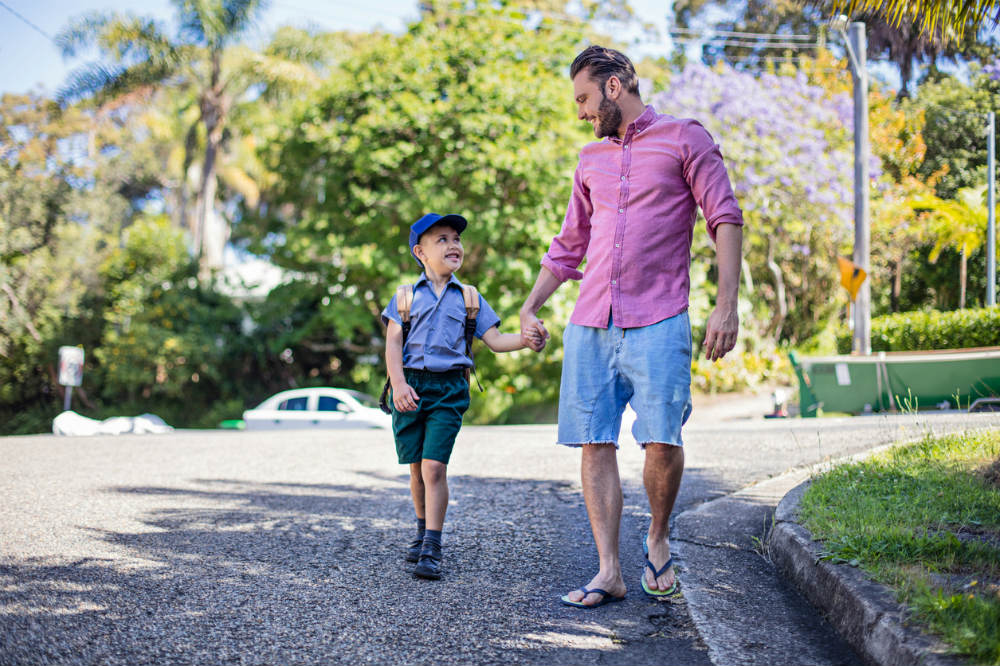Would you spend $50,000 more for a property to be in the catchment area of a top local school?
For many parents looking for a family home the answer is an emphatic yes, and a clear indication that people are prepared to pay a premium to be near a well regarded or top performing local school. There is also data to back this up, where suburbs near in-demand schools have higher house price growth than other postcodes nearby.
Let’s take a look at the evidence and what you need to consider before buying.
What is a school catchment area?
A school catchment area is a defined area – typically around a state school – where you must live to have your children automatically enrolled. The boundaries are defined by the school and can change over time, depending on student numbers, overcrowding and changes to local demographics. The main reason for having catchment areas is to maintain class size targets, and to service the needs of in-catchment families.
If you are outside the catchment area of a school you can still apply to go there – you are just not guaranteed a place. Your child will typically go on a waiting list, and you may even need to attend an interview to justify them attending the school. Private, independent and Catholic schools can also have less formal rules on catchment areas, and may take your location into account when considering your application.
Is there a correlation between property prices and school catchment areas?
The short answer is yes – with all data pointing to a direct correlation between property price growth and in-demand school catchment areas. Families want the best for their children, and top of the list for many is a top-notch education. What is it worth?
According to Domain’s School Zones Report, properties in prime school catchment areas can sell for up to 10 to 15 per cent more. The report found that property price growth near top schools was significantly higher than the average growth rate of the city. Other sources report anywhere from a $50,000 to $150,000 premium for a home in an in-demand postcode.
Buying a property in a school catchment area
If you are considering a property purchase based on a school catchment area make sure you do your research.
Particular postcodes are not guaranteed to perform because of a school, and factors can change over time. Schools alter their catchment areas periodically – called rezoning – to keep a handle on numbers. So a suburb or property may slip out of a catchment area, or be included if the school expands their catchment area. You also need to track the performance of a school – a change in headmaster could impact academic results for the better or worse.
The safest way of securing a spot in a local school is to find out the current zone, and buy a property that is well within the geographical boundaries. Buy in a fringe location and you could find yourself excluded if the school shrinks its boundaries. If you have two children this could mean the younger sibling may not be guaranteed a place in the school, even if the older child is at the school.
In Sydney’s 10 fastest growing school catchment areas, prices increased by more than 20 per cent in the year to October 2016.

Sydney’s most sought after school catchment areas
If you need evidence that demand for school places can drive demand for property, look no further than Sydney. Domain found that in the 10 fastest growing school catchment areas, prices increased by more than 20 per cent in the year to October 2016. This is in contrast to the 1.5 per cent growth recorded across Sydney.
In terms of specific schools the catchment zone around Neutral Bay Public School had the highest price growth (31.4 per cent) in the year to 2016 for primary schools in Sydney. For high schools, Hunters Hill High School topped the list with year-on-year growth of 20 per cent.
Brisbane’s most sought after school catchment areas
Domain found that even though property prices slumped in Brisbane over 2015/2016, in-demand catchment areas saw anywhere from 19 to 40 per cent price growth. Logan Reserve State School (+40 per cent) and Broadbeach State School (+23.8 per cent) have been top performers in the recent past, while Sunshine Beach State High School (+19 per cent) and Sunnybank State High School (+14 per cent) lead the high schools.
In the last year we have seen massive demand around the South Brisbane, West End area as the catchment area for State High was changed. Locally there is always people wanting to get into the McDowall State Primary School and that is certainly helping to support house prices here.
Where can I get more information about school catchment areas?
If you’re thinking about getting your children into a particular school, a local real estate agent can also help with your search. They will know what homes are suitable for families in the area, and help you find the right property in the local catchment area.
You can also access more information about school catchment areas and zones by visiting the education department website in your state or by contacting the school directly. You can also use the MySchool site to find out more about academic performance and compare the schools in the area you are interested in.
Source: www.openagent.com.au
House prices are on the rise. Find out the value of your property now.
Get a free online property report from Hicks Real Estate. It takes seconds.




